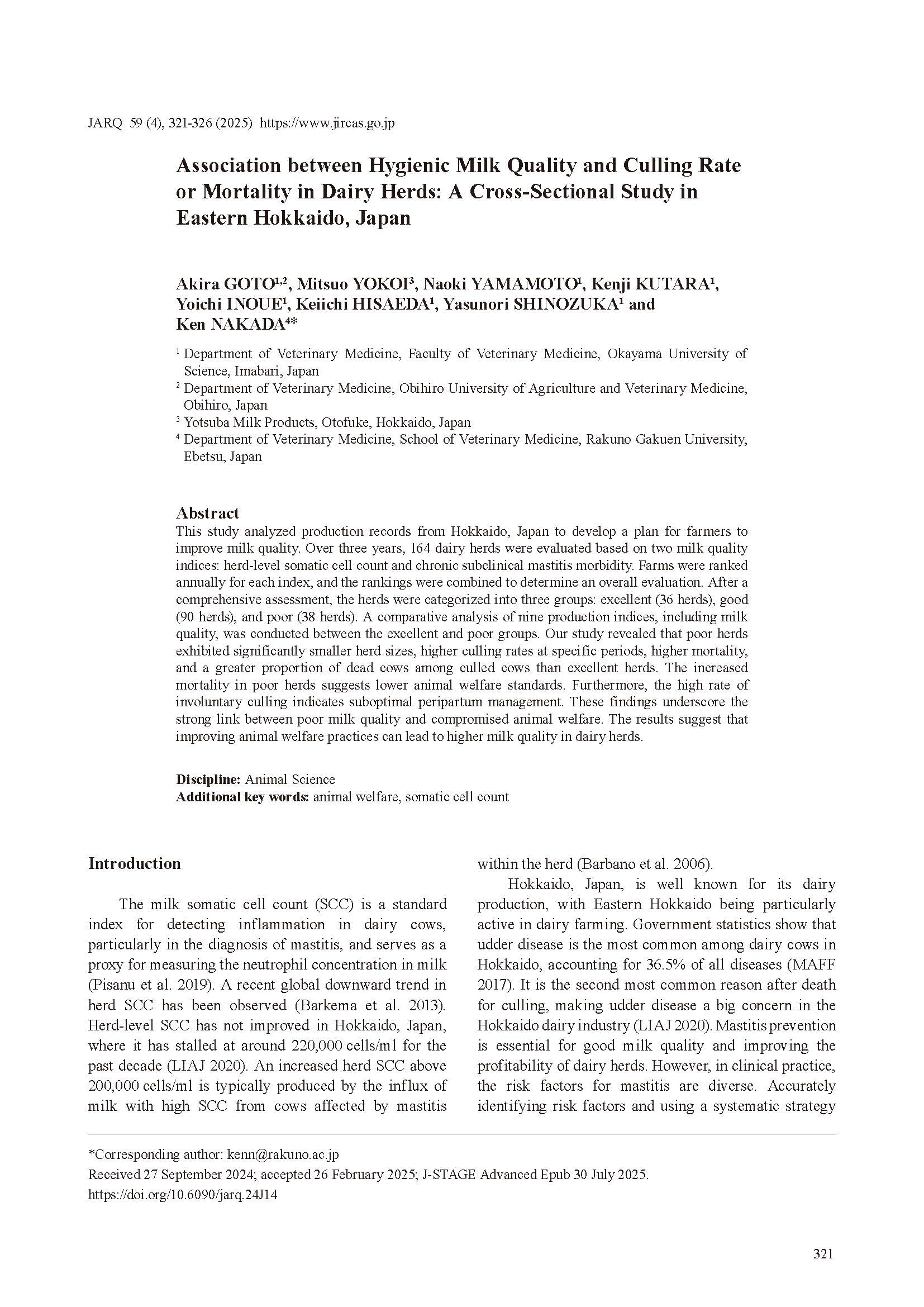Association between Hygienic Milk Quality and Culling Rate or Mortality in Dairy Herds: A Cross-Sectional Study in Eastern Hokkaido, Japan
Japan Agricultural Research Quarterly
| ISSN | 00213551 |
|---|---|
| NII recode ID (NCID) | AA0068709X |

Full text
jarq59-4_321-326.pdf681.88 KB
This study analyzed production records from Hokkaido, Japan to develop a plan for farmers to improve milk quality. Over three years, 164 dairy herds were evaluated based on two milk quality indices: herd-level somatic cell count and chronic subclinical mastitis morbidity. Farms were ranked annually for each index, and the rankings were combined to determine an overall evaluation. After a comprehensive assessment, the herds were categorized into three groups: excellent (36 herds), good (90 herds), and poor (38 herds). A comparative analysis of nine production indices, including milk quality, was conducted between the excellent and poor groups. Our study revealed that poor herds exhibited significantly smaller herd sizes, higher culling rates at specific periods, higher mortality, and a greater proportion of dead cows among culled cows than excellent herds. The increased mortality in poor herds suggests lower animal welfare standards. Furthermore, the high rate of involuntary culling indicates suboptimal peripartum management. These findings underscore the strong link between poor milk quality and compromised animal welfare. The results suggest that improving animal welfare practices can lead to higher milk quality in dairy herds.
| Date of issued | |
|---|---|
| Creator | Akira GOTO Mitsuo YOKOI Naoki YAMAMOTO Kenji KUTARA Yoichi INOUE Keiichi HISAEDA Yasunori SHINOZUKA Ken NAKADA |
| Subject | animal welfare somatic cell count |
| Publisher | Japan International Research Center for Agricultural Sciences |
| Received Date | 2024-09-27 |
| Accepted Date | 2025-02-26 |
| Available Online | |
| Volume | 59 |
| Issue | 4 |
| spage | 321 |
| epage | 326 |
| DOI | 10.6090/jarq.24J14 |
| Language | eng |
